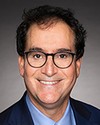Thank you, sir.
No, I do not. I don't think that the experience of the rise and fall of inflation in the post-COVID environment confirms the traditional textbook story, which is that inflation arises from excess purchasing power, generally created in a labour market with unemployment that is too low. I don't think that this narrative fits the facts of the inflation that we have experienced.
There has obviously been a significant and helpful decline in inflation since the mid-2022 period, when it peaked in Canada. It peaked at an 8% rate year over year. That decline in inflation has not been correlated with any changes in wage-setting behaviour, for example. In fact, in Canada, nominal wage growth has picked up in that period because workers, of course, are trying to negotiate higher wages to keep up with the inflation that undermined their real wage growth in the earlier period.
We also haven't had a significant change in fiscal policy or injections from the government sector in that period.
What we have seen is a normalization of global supply chains, reduction in shortages of key commodities like semiconductors or building products—a shortage that drove up prices in the initial post-COVID period—and a significant decline in world energy prices. All of those factors explain why inflation rose and why it fell. It has no obvious connection to so-called excess demand.
In real per capita or real per household terms, Canadians are spending significantly less now than they were before the pandemic hit, so it's hard to say that we have too much spending power. In fact, Canadians are grappling with the impacts of high interest rates on their disposable income. It was rather a supply-side factor exacerbated, as I mentioned, by profit-taking by some companies that were able to take advantage of that situation.





